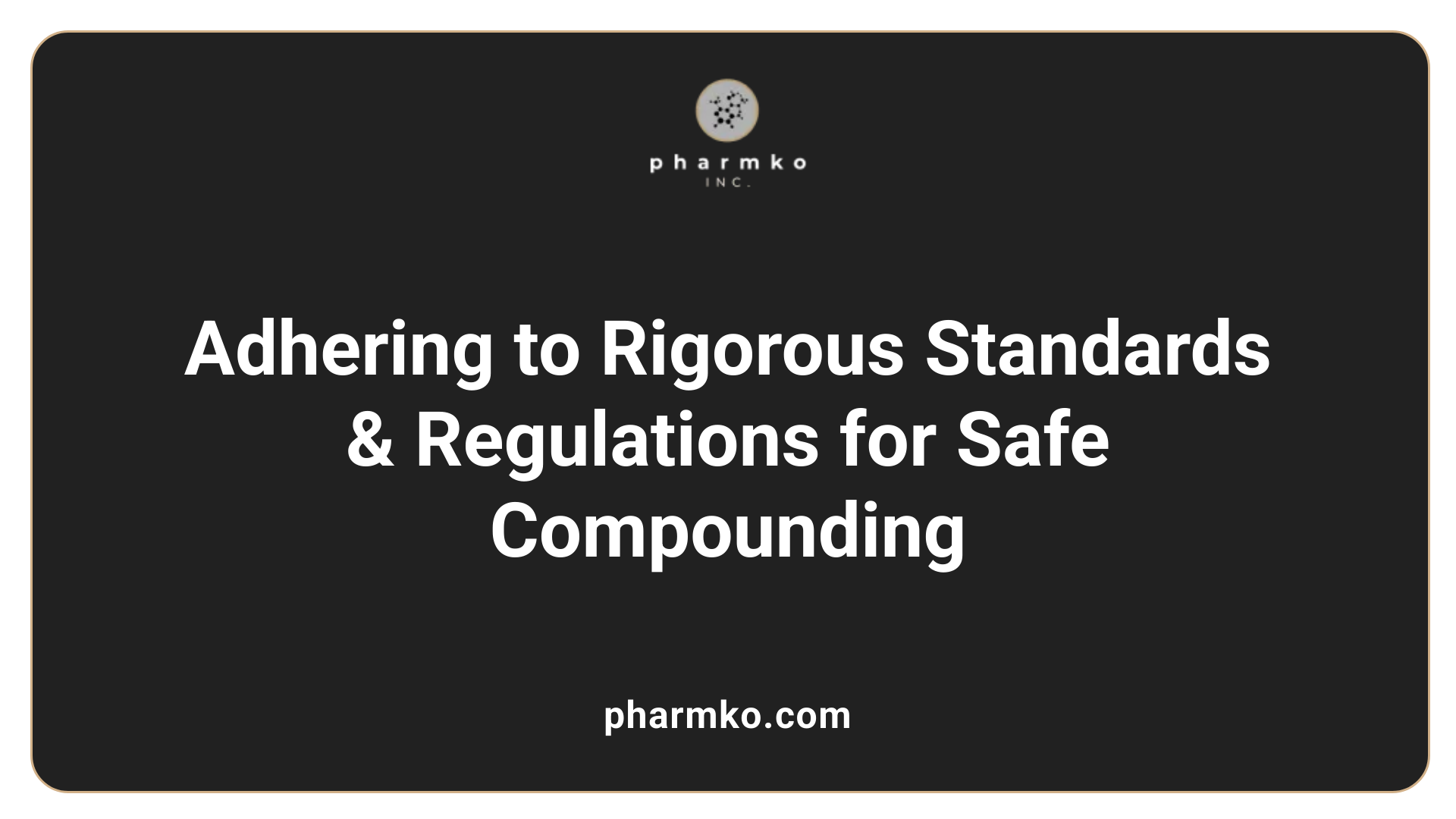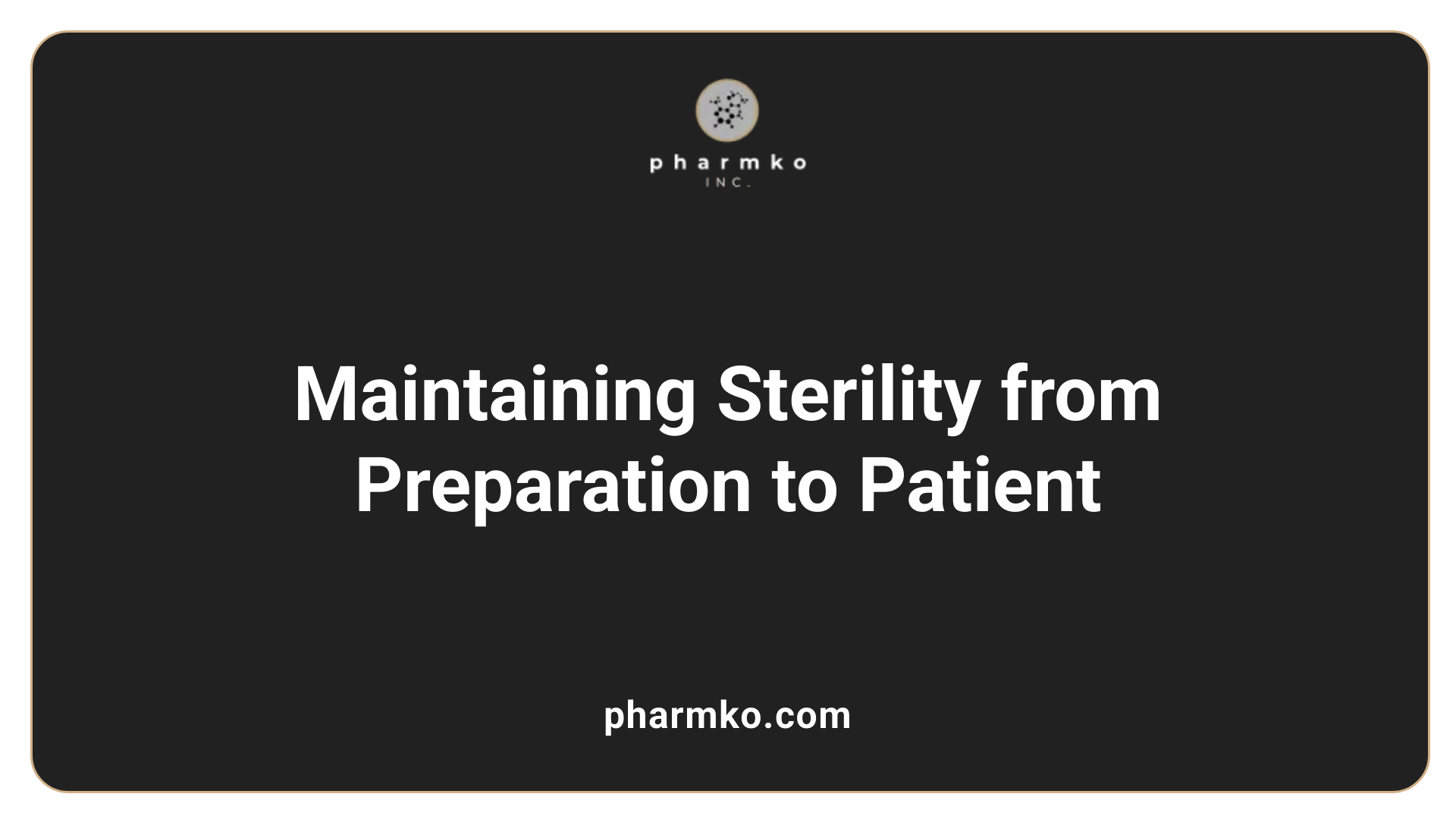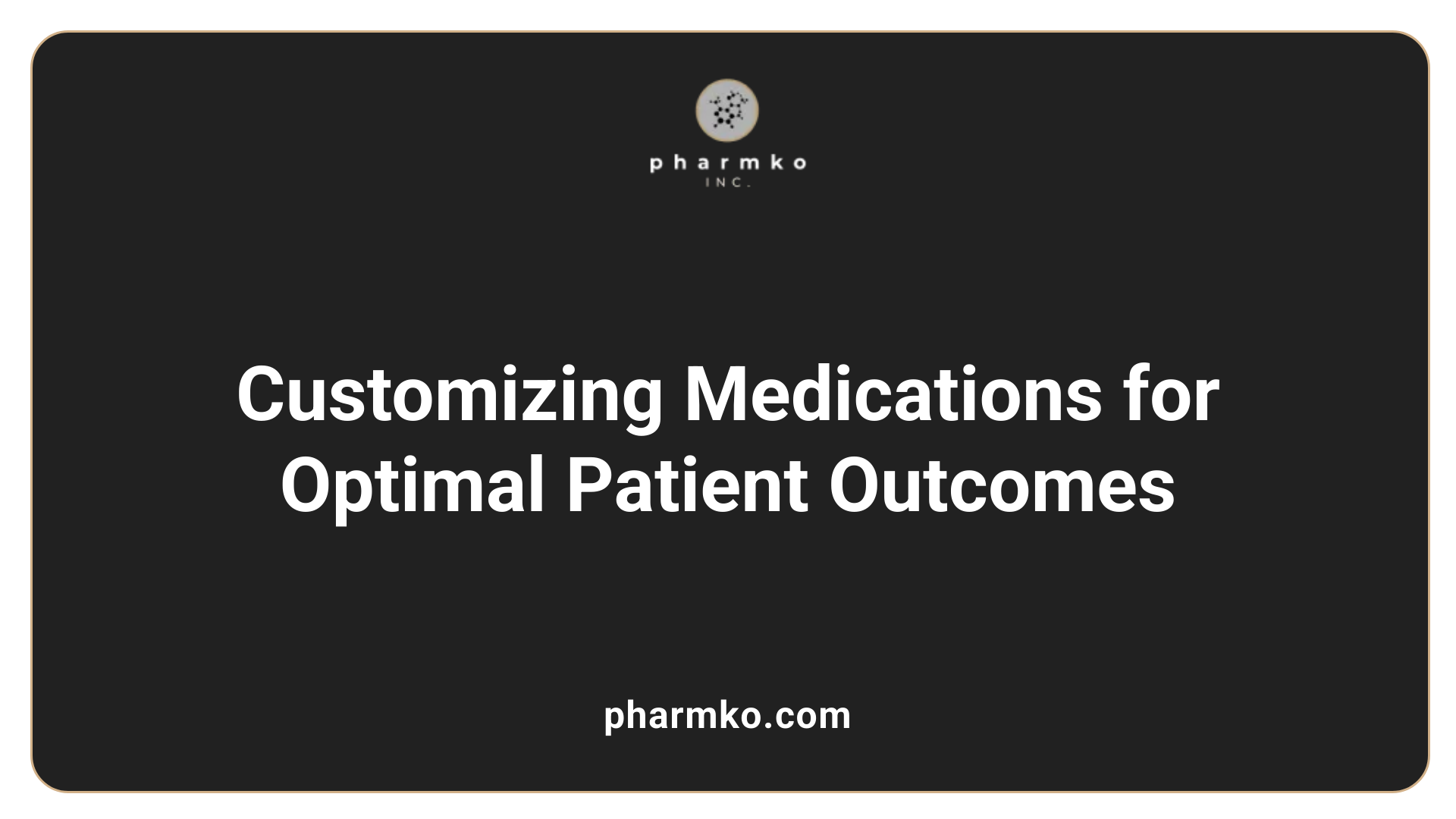Role of sterile compounds in infusion
Introduction to Sterile Compounds in Infusion
Sterile compounds are fundamental to modern infusion therapy, underpinning the safety, effectiveness, and personalization of medication administration. They involve the meticulous preparation of drugs in contamination-free environments, vital for vulnerable patient populations and complex treatment regimens. This article explores the significance, standards, procedures, and oversight involved in sterile compounding for infusions, highlighting how these practices safeguard patient health and advance personalized medicine.
Understanding the Importance of Sterile Compounds in Infusions

What is the importance of sterile compounds in infusion therapy?
Sterile compounds play a critical role in ensuring the safety and effectiveness of infusion treatments. These medications are prepared in environments free from bacteria, viruses, and other infectious microorganisms, which is crucial when drugs are administered directly into the bloodstream.
Proper sterile compounding helps prevent infections, adverse reactions, and microbial growth that can lead to serious health complications. This is particularly vital for vulnerable groups such as immunocompromised patients, who are at higher risk of serious infections.
The preparation process involves strict environmental controls, including use of ISO Class 5 cleanrooms equipped with HEPA filters, and aseptic techniques. These measures reduce the risk of contamination during the handling and mixing of medications.
Environmental monitoring is also essential; regular airborne and surface sampling ensures ongoing quality and sterility of compounded medications. Customized formulations—like injections, ophthalmics, or nutrition solutions—are often compounded to meet individual patient needs, excluding unnecessary additives and allergens.
Standards such as USP <797> guide these practices, emphasizing the importance of continuous quality assurance. The overall goal is to preserve medication integrity, maximize safety, and ensure therapeutic efficacy, making sterile compounding indispensable in infusion therapy.
Standards, Procedures, and Regulations in Sterile Compounding

What are the standards, procedures, and regulations related to sterile compounding in infusions?
Sterile compounding in infusions is governed by a comprehensive framework designed to ensure medication safety and prevent microbial contamination. The primary standard is USP Chapter <797>, which provides detailed guidelines on aseptic technique, environmental controls, personnel training, and quality assurance. This chapter classifies compounded sterile preparations (CSPs) into risk levels—low, medium, and high—based on contamination risk, affecting storage times and handling procedures.
In addition to USP <797>, other relevant standards include USP <800> for hazardous drugs and USP <795> for non-sterile compounding. Compliance with these standards is typically enforced at the state level by pharmacy boards, which oversee licensing and inspections. These state agencies ensure that facilities meet environmental control criteria such as air quality standards classified by ISO classifications and that personnel are trained and regularly assessed in aseptic techniques.
Regulatory oversight also involves federal agencies. The Food and Drug Administration (FDA) monitors for potential manufacturing rather than compounding activities, inspecting pharmacies if there’s suspicion of manufacturing. Moreover, accreditation organizations like The Joint Commission (JCAHO), ACHC, and CHAP verify compliance with USP standards through regular audits.
Recent updates to USP <797>, finalized in 2022 and becoming effective in November 2023, reinforce safety protocols including validation of sterilization processes, environmental monitoring, and error prevention measures. Practitioners must adhere to these regulations regarding environmental controls, staff competency, and documentation to uphold the integrity and sterility of compounded medications. Overall, these regulations create a layered oversight system that maintains high standards for sterile preparation for infusion therapies.
Best Practices and Techniques for Preparation

What are best practices and guidelines for preparing sterile compounds for infusions?
Preparing sterile compounds for infusions involves meticulous techniques that prioritize patient safety by preventing contamination. One of the foundational practices is thorough hand hygiene—technicians must scrub their hands and forearms using antiseptic solutions before gloving up.
Personnel are required to wear appropriate sterile garb, including gowns, gloves, masks, and hair covers, to minimize microbial shedding into the sterile environment. Proper garbing procedures, including the use of sterile gloves and disinfecting gloves with alcohol, are essential before handling any sterile materials.
Facility design plays a crucial role in maintaining sterility. The environment should include designated cleanrooms classified as ISO 5 or higher, equipped with HEPA filtration and unidirectional airflow to create a sterile working space. Primary engineering controls such as biological safety cabinets, laminar airflow workbenches, or isolators are used to provide a sterile work zone.
Environmental controls extend beyond the cleanroom. Routine environmental monitoring, including air sampling, surface sampling, and particle counts, help detect deviations early. Regular cleaning with germicidal agents and alcohol-based disinfectants maintains a low bioburden on surfaces.
Validated procedures are followed for disinfection, such as wiping vial rims with alcohol prior to puncture and sterilizing all equipment, supplies, and surfaces. Handling should always follow aseptic techniques, with minimal movement and deliberate actions to reduce the risk of airborne contamination.
Proper packaging and labeling are critical. CSPs must be accurately labeled with lot numbers, expiration dates, and compound details. Storage conditions, often refrigerated or protected from light, sustain sterility and stability for the required duration.
Documentation is an integral part of the process. Every step—from component receipt, preparation, to final labeling—must be recorded for traceability and quality assurance.
Following these best practices ensures the integrity of sterile compounded medications, ultimately safeguarding patient health and maintaining compliance with regulatory standards.
Role of Proper Packaging, Storage, and Transportation
 Maintaining sterility throughout the entire chain of handling compounded sterile preparations (CSPs) is essential for patient safety. Proper packaging ensures that the medication remains free from contamination, damage, and environmental factors that could compromise its integrity. Packaging methods include sterile, airtight seals suitable for the medication's nature and expected storage conditions.
Maintaining sterility throughout the entire chain of handling compounded sterile preparations (CSPs) is essential for patient safety. Proper packaging ensures that the medication remains free from contamination, damage, and environmental factors that could compromise its integrity. Packaging methods include sterile, airtight seals suitable for the medication's nature and expected storage conditions.
Storage conditions are equally critical. CSPs must be stored under specified temperature and humidity controls to prevent microbial growth and degradation of the medication. Using clear, labeled containers facilitates easy identification and helps prevent mix-ups, ensuring that each product can be traced back reliably if needed. Incorporating tamper-evident or child-resistant packaging adds an additional safety layer.
Transportation considerations are vital in preserving the product’s stability and sterility. During transit, CSPs should be kept in temperature-controlled environments, such as refrigerated or insulated containers, to prevent temperature deviations that could alter drug stability. Avoiding agitation, shaking, or jostling prevents physical damage or contamination. Proper documentation and secure packaging also guard against misidentification and theft.
Overall, stringent procedures for packaging, storage, and transportation are fundamental in maintaining the efficacy and safety of sterile compounded medications until they reach the patient. This process involves compliance with regulatory standards and adherence to best practices to minimize risks associated with contamination, improper storage, or transportation mishaps.
Contribution to Personalized and Critical Care
 Sterile compounding plays a vital role in tailoring medications to meet individual patient needs, especially for those requiring specialized formulations that are not commercially available. By creating customized dosages, excluding allergens, or developing unique combinations, pharmacists can improve treatment efficacy and patient comfort.
Sterile compounding plays a vital role in tailoring medications to meet individual patient needs, especially for those requiring specialized formulations that are not commercially available. By creating customized dosages, excluding allergens, or developing unique combinations, pharmacists can improve treatment efficacy and patient comfort.
This process is particularly important for managing various health conditions, including hormonal imbalances, dermatological needs, and complex chronic diseases. For example, compounding allows for the preparation of medications for rare diseases, ensuring patients have access to necessary treatments.
In addition, sterile compounding helps address drug shortages by enabling pharmacies to prepare essential medications on demand. During times of supply limitations, compounded sterile preparations (CSPs) ensure continuous patient care, especially for critical treatments like chemotherapy or life-saving injectable medications.
How does sterile compounding contribute to patient safety and infection prevention?
Sterile compounding significantly enhances patient safety and infection prevention by ensuring medications are prepared in an environment that minimizes contamination risks through strict adherence to aseptic techniques, environmental controls, and proper facility design. The use of primary engineering controls like laminar airflow workbenches, HEPA filtration, and controlled cleanroom environments prevents microbial ingress during preparation. Rigorous protocols, including staff training, proper garbing, regular environmental monitoring, and appropriate cleaning procedures, help maintain sterility and reduce microbial growth. Accurate medication handling, adherence to guidelines such as USP 797, and proper storage and expiration practices further prevent infections and contamination. Overall, sterile compounding safeguards patients from bloodstream infections, reduces adverse drug events, and upholds high standards of infection prevention in healthcare settings.
This tailored approach not only improves individual health outcomes but also contributes to safer healthcare environments, reducing the risk of infections and enhancing the efficacy of many treatments.
Conclusion: Upholding Standards for Safe Infusion Therapy
The role of sterile compounds in infusion therapy is profound, anchoring patient safety, medication efficacy, and infection control. Adherence to established standards like USP <797>, rigorous environmental controls, continual education for healthcare providers, and comprehensive regulatory oversight collectively safeguard the integrity of sterile compounded medications. As infusion therapy advances towards greater personalization, ongoing training, technological innovation, and quality assurance will remain pivotal in ensuring these critical medications meet the highest standards of safety and efficacy, ultimately improving patient outcomes worldwide.
References
- [PDF] ASHP Guidelines on Compounding Sterile Preparations
- Understanding the Benefits of Sterile Compounding in Modern ...
- Sterile Compounding Toolkit - The Pharmacy Technician Society®
- Why is Sterile Compounding Important? - Myerlee Pharmacy
- Sterile Compounding Resource Center |Best Practices and methods
- USP General Chapter 797
- Pharmacy Compounding and Sterile - Tyler Junior College
- Safety of Compounded Sterile Preparations FAQs
- Retention of Sterile Compounding Knowledge Among Pharmacy ...
- Compounding and the FDA: Questions and Answers













